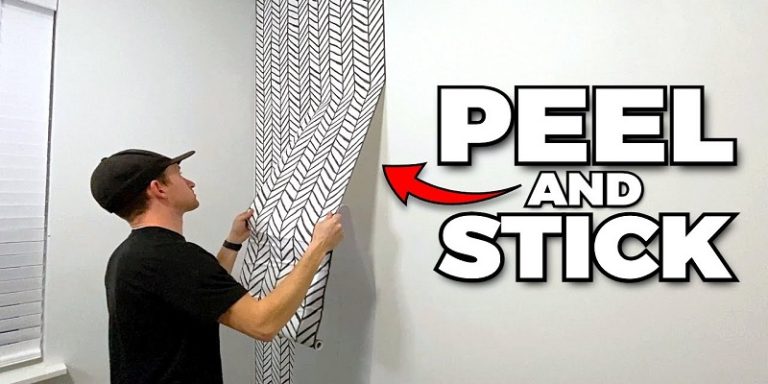Can You Print Anything On A T-Shirt?
Last Updated on June 18, 2025 by Jaclyn A. Neeley
Printing designs on t-shirts has become a popular way to express creativity, promote brands, and create personalized gifts. However, the question arises: Can you print anything on a t-shirt? The answer is multifaceted, involving considerations of printing methods, fabric types, design complexity, and legal constraints. This article will explore these aspects in detail to provide a comprehensive understanding of t-shirt printing possibilities.
Types of T-Shirt Printing Methods
Screen Printing
Screen printing, also known as silk-screen printing, is one of the oldest and most popular methods for t-shirt printing. It involves creating a stencil (or screen) and using it to apply layers of ink on the printing surface. Each color in the design requires a separate screen, making this method ideal for simple designs with few colors. Screen printing is cost-effective for large orders and produces durable, vibrant prints.
Pros:
- High durability
- Vibrant colors
- Cost-effective for bulk orders
Cons:
- Not suitable for complex designs with many colors
- Time-consuming setup
Direct-to-Garment (DTG) Printing
DTG printing uses inkjet technology to print designs directly onto the fabric. This method is excellent for intricate designs and detailed artwork, allowing for high-resolution prints with a soft feel. DTG is best suited for small to medium-sized orders and offers a quick turnaround time.
Pros:
- High detail and resolution
- Suitable for small orders
- Quick setup
Cons:
- Higher cost for large orders
- Best results on cotton fabrics
Dye Sublimation
Dye sublimation printing involves transferring dye onto the fabric using heat. This method is ideal for all-over prints and works best on synthetic fabrics like polyester. The dye becomes part of the fabric, resulting in vibrant, durable prints that do not fade or crack.
Pros:
- Vibrant, long-lasting prints
- Suitable for all-over designs
Cons:
- Limited to synthetic fabrics
- Not suitable for dark-colored fabrics
Heat Transfer Vinyl (HTV)
HTV involves cutting designs from vinyl sheets and using heat to transfer them onto the t-shirt. This method is popular for creating custom designs, especially for sports jerseys and personalized apparel. HTV is durable and allows for a variety of finishes, including matte, glossy, and glitter.
Pros:
- Durable and versatile
- Suitable for small orders
Cons:
- Limited to simpler designs
- Time-consuming for large orders
Plastisol Transfers
Plastisol transfer printing combines screen printing and heat transfer methods. Designs are screen-printed onto transfer paper and then applied to the t-shirt using a heat press. This method is useful for achieving special finishes and textures.
Pros:
- Special finishes and textures
- Durable prints
Cons:
- Not suitable for bulk orders
- Longer printing time
Direct-to-film (DTF) Printing
DTF printing involves printing designs onto a special film and then transferring them to the fabric using heat. This method is versatile and works on various fabric types, including cotton, polyester, and blends.
Pros:
- Versatile fabric compatibility
- High detail and durability
Cons:
- Requires specialized equipment
- Higher cost for small orders
Fabric Considerations
The type of fabric used for t-shirts significantly impacts the printing method and the final result. Common t-shirt fabrics include cotton, polyester, and cotton/polyester blends, each with its own pros and cons.
Cotton
Cotton is a natural fiber known for its softness, breathability, and ease of printing. It is the preferred fabric for DTG and screen printing due to its high absorption capabilities. However, cotton can shrink and take longer to dry.
Polyester
Polyester is a synthetic fiber that dries quickly, resists wrinkles, and is durable. It is ideal for dye sublimation printing but can be less comfortable and more expensive than cotton.
Cotton/Polyester Blends
Blended fabrics combine the best qualities of cotton and polyester, offering softness, durability, and quick drying. However, they may not be as eco-friendly and can limit printing options.
Design Complexity
The complexity of the design plays a crucial role in determining the appropriate printing method. Simple designs with few colors are best suited for screen printing, while intricate, multi-colored designs are ideal for DTG or DTF printing.
Simple Designs
Simple designs with bold graphics and limited colors are cost-effective and easy to print using screen printing or HTV. These methods are ideal for logos, text, and basic shapes.
Complex Designs
Complex designs with gradients, shading, and multiple colors require advanced printing methods like DTG, DTF, or dye sublimation. These methods can capture fine details and produce high-resolution prints.
Legal Considerations
When printing designs on t-shirts, it is essential to consider copyright laws. Using copyrighted content without permission can lead to legal issues. It is crucial to create original designs or obtain the necessary licenses to use copyrighted material.
Copyright Infringement
Copyright infringement occurs when someone uses copyrighted content without the owner’s permission. This includes artwork, logos, and images. To avoid infringement, always use original designs or seek permission from the copyright holder.
Obtaining Licenses
If you wish to use copyrighted material, you must obtain a license from the copyright owner. This may involve paying a fee or agreeing to specific terms of use. Licensing ensures that you can legally use the content for your t-shirt designs.
Conclusion
In conclusion, while you can print almost anything on a t-shirt, several factors must be considered to achieve the best results. The choice of printing method, fabric type, design complexity, and legal constraints all play a crucial role in the final outcome. By understanding these aspects, you can make informed decisions and create high-quality, custom t-shirts that meet your needs and expectations. Whether you are printing for personal use, a small business, or a large-scale operation, there is a t-shirt printing method that suits your requirements.
FAQs
Can you print anything on a shirt?
You can print almost any design on a shirt, but you must ensure that the design does not infringe on copyright or trademark laws. Original artwork, royalty-free images, and public-domain content are generally safe to use. However, using copyrighted material without permission, such as famous characters, logos, or protected quotes, can lead to legal issues. Always verify the legal status of your design before printing to avoid potential infringement.
Can a normal printer print on a t-shirt?
A normal inkjet or laser printer can be used to print designs onto transfer paper, which can then be applied to a t-shirt using a heat press or iron. This method is known as heat transfer printing and is suitable for small-scale or home-based projects. However, for professional-quality prints, specialized printers like direct-to-garment (DTG) printers are recommended.
How do I print something on my t-shirt?
To print something on a t-shirt, follow these steps:
- Create or select a design and save it as a digital file.
- Print the design onto transfer paper using an inkjet or laser printer.
- Place the transfer paper on the t-shirt, design side down.
- Use a heat press or iron to apply heat and pressure, transferring the design onto the fabric.
- Peel off the transfer paper to reveal the printed design.
Is it legal to print quotes on a t-shirt?
Printing quotes on a t-shirt is legal if the quotes are in the public domain, such as those from authors who died over 70 years ago, or if they are common sayings. However, quotes from copyrighted material, famous characters, or trademarked phrases require permission from the copyright or trademark holder to avoid legal issues. Always verify the source and legal status of the quote before printing.
What are the most popular types of t-shirt printing?
The most popular types of t-shirt printing include:
- Screen Printing: Ideal for large orders and simple designs with few colors.
- Direct-to-Garment (DTG) Printing: Best for complex, multi-color designs and small print runs.
- Heat Transfer Vinyl (HTV): Suitable for intricate designs and small batches.
- Dye Sublimation: Perfect for all-over prints on polyester fabrics.
- Plastisol Transfer







